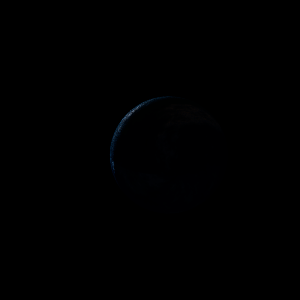|
|
Space Astro
|
Info for exoplanet "Pipogo Mi"
| Scientific (actual) data |
|---|
| Planet | TOI-700 b |
| Planet status | Confirmed |
| Planet mass | 0.00406 |
| Radius | 0.08154 |
| Orbital period | 9.97722 |
| Semi major axis | 0.0677 |
| Orbit eccentricity | 0.075 |
| Inclination | 89.6 |
| Discovered | 2020 |
| Updated | 2023-01-12 |
| Omega | 210 |
| Tzero tr | 2458880 |
| Impact parameter | 0.24 |
| Publication | Published in a refereed paper |
| Detection type | Primary Transit |
| Mass detection type | Theoretical |
| Radius detection type | Primary Transit |
| Star name | TOI-700 |
| Right ascension | 97.1° |
| Declination | -65.58° |
| Mag v | 13 |
| Star distance | 31.127 |
| Star metallicity | -0.07 |
| Star mass | 0.416 |
| Star radius | 0.42 |
| Star sp type | M2V |
| Star age | 1.5 |
| Star temperature | 3480 |
| Wikipedia article | TOI-700 b |
Back
| |
| Fictional info (?) |
|---|
| Suggested name | Pipogo Mi |
| Planet type | Terrestrial |
| In English, Pipogo Mi is often referred to as the "red planet" because the hydrogen prevalent on its surface gives it a deep red appearance that is recognizable among the astronomical bodies visible to the naked eye. It is the second-brightest natural object in the night sky after Gyopyu, reaching an apparent magnitude of -5 - bright enough to cast shadows at night and, rarely, visible to the naked eye in broad daylight.
This terrestrial is named after the deity Pipogo Mi, the messenger of destruction.
Pipogo Mi is a terrestrial and is sometimes called Gyopyu's "brother planet" because of their similar size, mass, proximity to TOI-700, and bulk composition.
As one of the most noticeable objects in the sky, Pipogo Mi has been a major fixture in native folklore for as long as records have existed.
Pipogo Mi is the site of Olympus Mons, the biggest volcano and second-highest known mountain in its solar system, and of Valles Marineris, one of the largest canyons in its solar system.
The volume of water ice in the south polar ice cap, if melted, would be sufficient to cover the entire planetary surface to a depth of 19 meters.
Because of its fast rotation, the planet's shape is that of an oblate spheroid (it has a slight but noticeable bulge around the equator). The largest moon, Shinya-i, has a diameter greater than that of the planet Mars. |
| Atmosphere | Methane | 52% |
| Hydrogen | 31% |
| Carbonyl sulfide | 16% |
| Formaldehyde | 0.075% |
| Atmospheric pressure | 80 bar |
 |
| Moon | Shinya-i | Huge round rocky moon |
| Nopudo Shozoi Sa | Large round rocky moon |
| Neshu-ju | Large potato shaped gaseous planetoid |
| Notea Jijo | Large slightly egg-shaped gaseous moon |
| Uchako-nyuhyu'byu | Huge round oceanic asteroid |
| Doreso'nesa | Medium-sized almost round crater-filled moon |
| Popyabo No | Huge irregular ice moon |
| Ryahyo-kibyo | Huge round oceanic comet |
| Byazo'yata Cha | Huge almost round oceanic asteroid |
| Poryaji Ka | Very small potato shaped rocky moon |
| Munukapyo Ya | Huge round gaseous comet |
| Kyoruri | Small round oceanic moon |
| Paryu | Large potato shaped rocky planetoid |
| Shan Pike-gira Te | Large slightly egg-shaped rocky asteroid |
| Bukyanyo | Medium-sized slightly egg-shaped ice asteroid |
| Google search for Pipogo mi |
|
Website by Joachim Michaelis
|
|
|
|